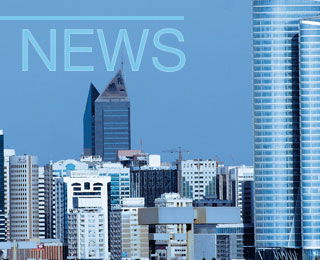The year 2017 is expected to be a difficult one to negotiate for large cement corporations that have high exposure to emerging markets as major price and volume issues are now surfacing.
In recent years several of the major cement groups sought to focus investment and new capacity in the emerging markets, safe in the knowledge that these markets would be the engine of cement consumption growth in the long term.
Currently, 60 per cent of LafargeHolcim's EBITDA exposure is in the emerging markets and some 28 per cent of its revenues are generated in the Asia-Pacific region. HeidelbergCement generates around 45 per cent of its revenues and 52 per cent of its EBITDA from emerging markets.
Given the demographics of many of these countries and their high development needs, pinning hopes on emerging markets seems like a sensible long-term plan. However, the obvious potential needs to be balanced against the volatility typically experienced by emerging economies in terms of their demand growth performance and the risks of oversupply that are often associated with high-growth markets.
Take Indonesia, for example, where both LafargeHolcim and HeidelbergCement (PT Indocement) have a well-established footprint. High cement demand growth has spurred massive investment in new capacity which has now tipped over into oversupply and placed pressure on prices, undermining margins. At the same time, demand volatility is evident as the economy enters a period of relative underperformance where forecast levels of construction activity have not materialised.
Cement volumes are also under pressure in South America, particularly in countries such as Ecuador (-16 per cent) where LafargeHolcim operates and integrated and grinding plant, and Argentina (-13 per cent) where LafargeHolcim has three integrated and two grinding plants. Brazil’s performance has also been dire, with 2016 consumption falling by around 13 per cent and cement prices following suit. Other multinationals, such as Votorantim, Intercement and CRH are also exposed to Brazil, where the short-term outlook is depressing. Luckily for HeidelbergCement, Latin America is its one blind spot and with no capacity in the region, will escape this current downturn.
In other parts of the world, it is the accumulation of new capacity combined with demand-side softening that is challenging cement producers. Take west Africa, where massive capacity additions in Senegal and Nigeria are ramping up competition, or some of the smaller markets such as Côte d’Ivoire and Ghana where substantial grinding capacity is being installed, increasing supply to these markets and bringing prices down in the process. Where cement regularly commanded pricing levels of over USS250/t, we are now witnessing prices in the US$150/t region. Producers here must be prepared to operate on smaller margins.
Increased competition is also having an effect on trade, by encouraging domestic producers to look at measures to protect their local production base. Cheap cement imports are increasingly the target of non-tariff barriers and other regulatory obstacles. Higher import taxes are also likely to reduce cement trade as countries such as Pakistan, Ghana and the Philippines look to expand their production capacity and protect their existing domestic markets.
Turning towards the developed markets of North America and Europe the picture is perhaps more optimistic. While the arrival of Donald Trump as the new US President has created great uncertainty for international politics and the global economy, the US itself is likely to benefit considerably. Trump's higher spending proposals of up to US$1trn on new US infrastructure plans would be of major benefit to HeidelbergCement, which has its Lehigh subsidiary and recently-acquired Essroc facilities, as part of the Italcementi merger. The other majors, including LafargeHolcim, Cemex and Buzzi Unicem also stand to benefit from the US recovery, which now seems well underway with November shipments up 8.2 per cent YoY.
Although there have been some concerning trends evident in the performance of certain emerging markets in 2016, there are grounds for optimism going forward. In the January issue of International Cement Review, HSBC analysts presented their 2017 outlook, arguing that at last the supply-demand balance was correcting. Emerging market growth, excluding China, is expected to outstrip new capacity over the 2017-18 period. We look forward to reporting on these trends over the coming months.

Buzzi increases tender offer to Gulf Cement Co
After the offer document submitted on 13 March 2025 for TC Mena Holdings Ltd, a subsidiary of ...